Sometimes subjects appear out of the blue (or black in this instance) and hit you head-on. Literally.
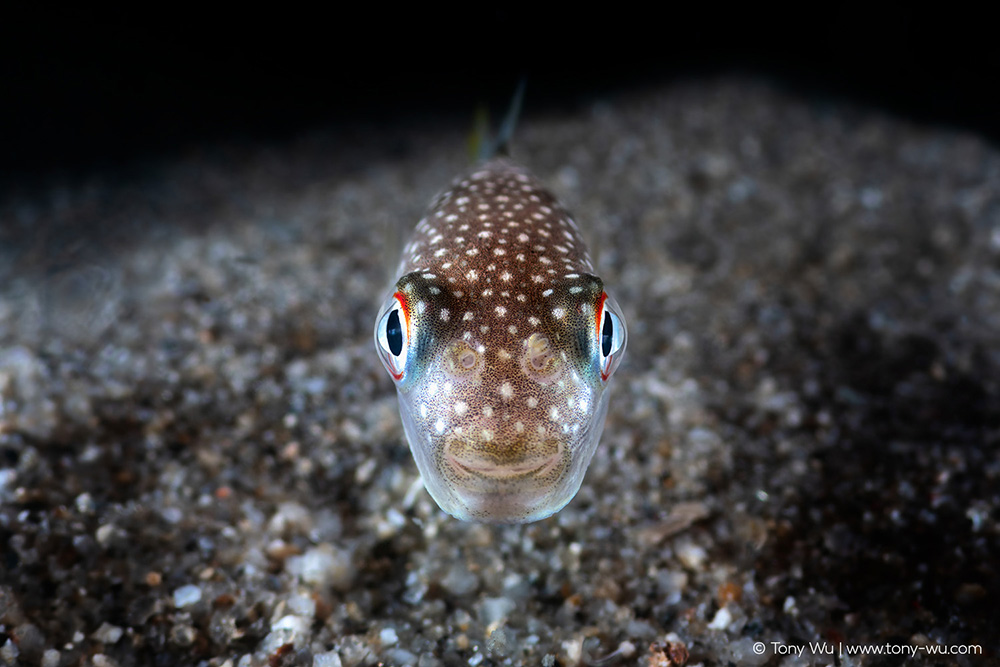
That’s a baby grass puffer (Takifugu niphobles), known as kusa-fugu (クサフグ) in Japanese.
Measuring all of an estimated 6cm (<2.5 inches) or so, this little fish charged straight at me, turning away in less than the blink of an eye to avoid impact.
Why I do not know.
My lights were at the side, so the fish wasn’t attracted directly to brightness. I was submerged in (much) less than a meter (3ft), gravel and muck bottom, in a spot that few would find appealing. No predators. Just a plethora of baby grass puffers.
As often happens, my trigger-finger reacted before my brain. Hitting the review button on my camera revealed this funny face-first-fish.
My objective that night wasn’t to look for, much less photograph grass puffers. But sometimes you have to acknowledge a sign from Mother Nature when it hits you in the lens.
So baby puffers it was for the next couple of hours, until my neck ached from the awkward 90º angle (or more at times) required to see through the viewfinder.
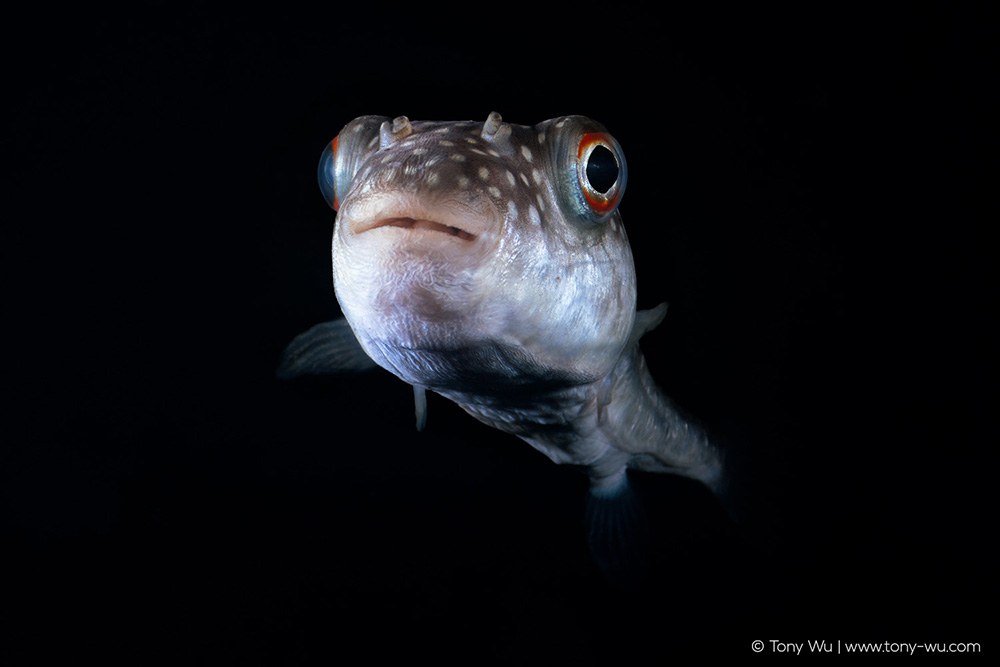
This species is relatively common throughout Japan. Most people pay them little mind. In the daytime, they can be everything from inquisitive to downright unsociable. Moody little things that they seem to be.
They have remarkable eyes—pupils that can appear green to blue when illuminated at certain angles, accentuated by striking orange-red mascara.
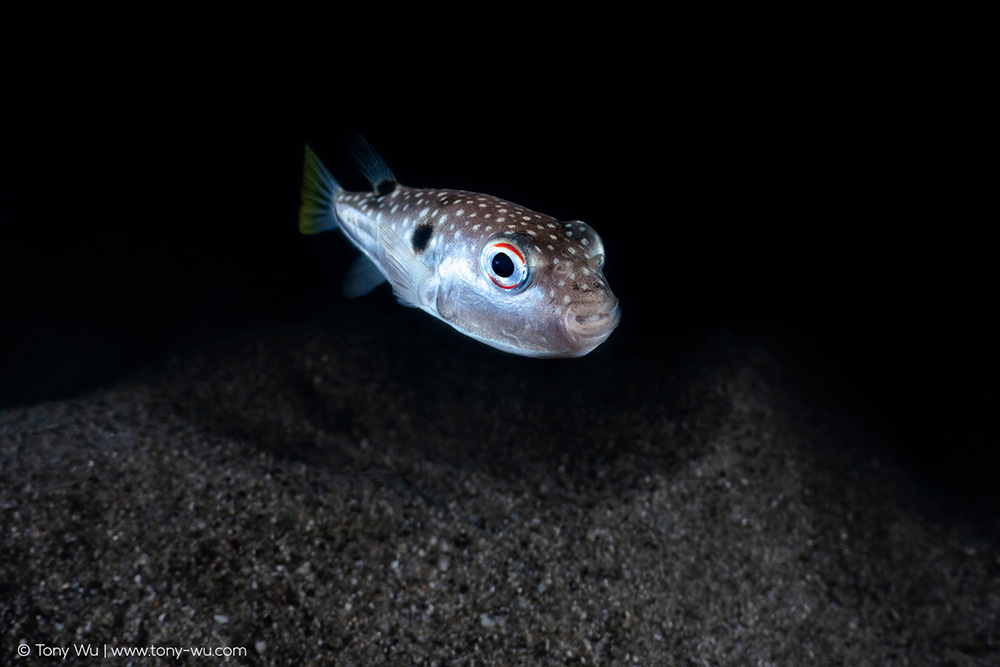
Perhaps the most interesting thing about this species is that grass puffers are one of only three types of fish known to spawn on land, the others being grunions and capelins.
I’ve only had a chance to witness the puffers' reproductive frenzy once.
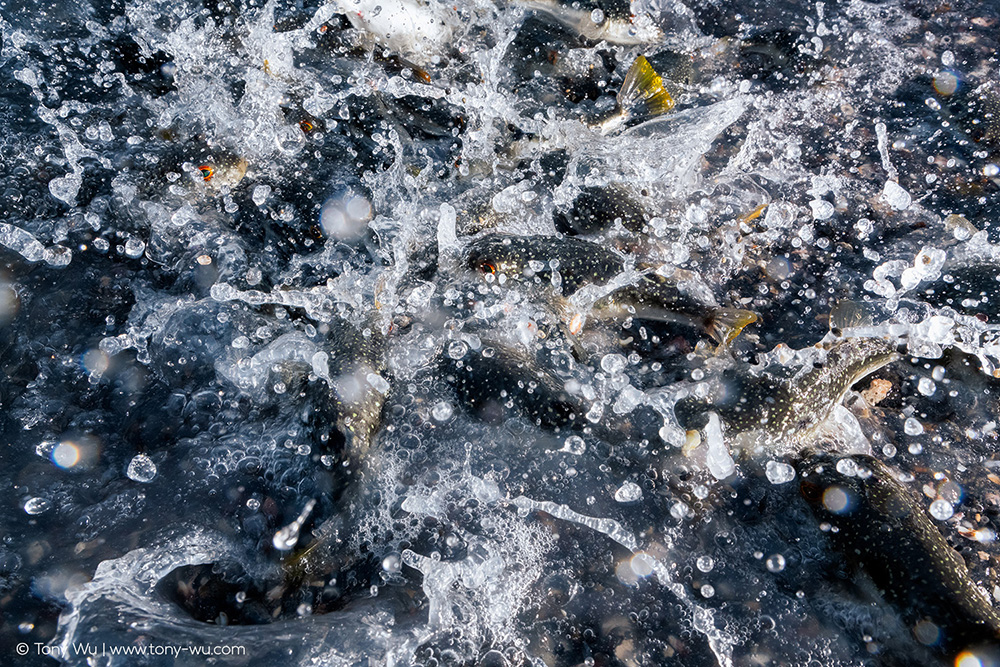
It is quite a sight. The fish gather in large numbers, waiting for time and tide to align. When the moment comes, females charge onto the beach, multiple males in tow. Females squirt out yellow eggs while males fight-flop-fertilise.
It is a dynamic affair—surging, slapping, flipping and such—salt and sea splashing every which way.
Most of the action takes place in the brief interval between waves, with the fish riding one wave in and the next back out. There are stragglers from time to time, but they inevitably hop on the next wave.
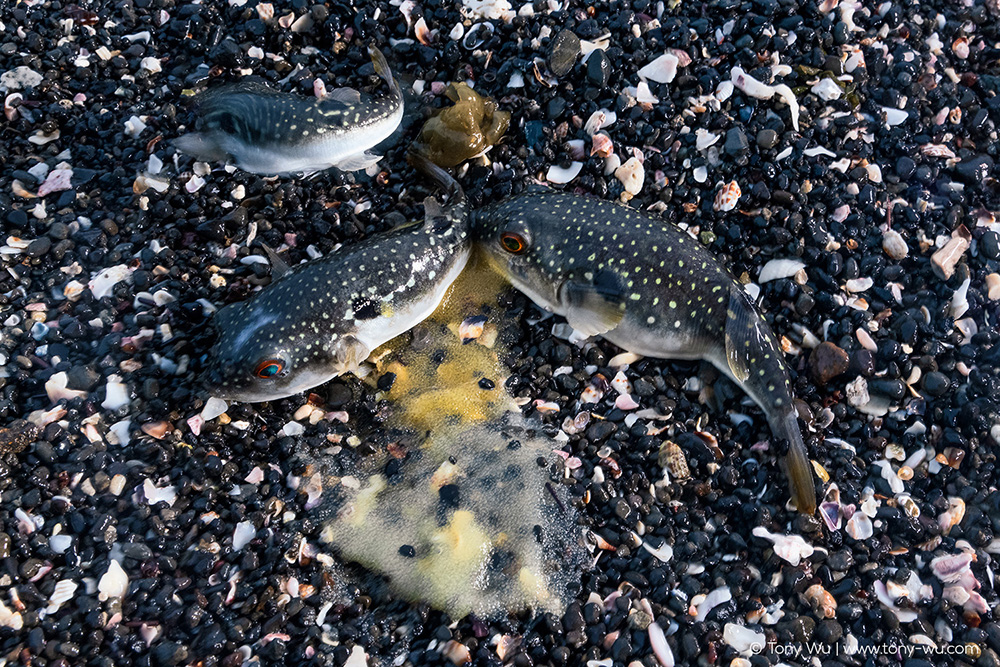
So there you have it. Your fascinating fish fact for trivia night.
A pufferfish that deposits yellow eggs on land.